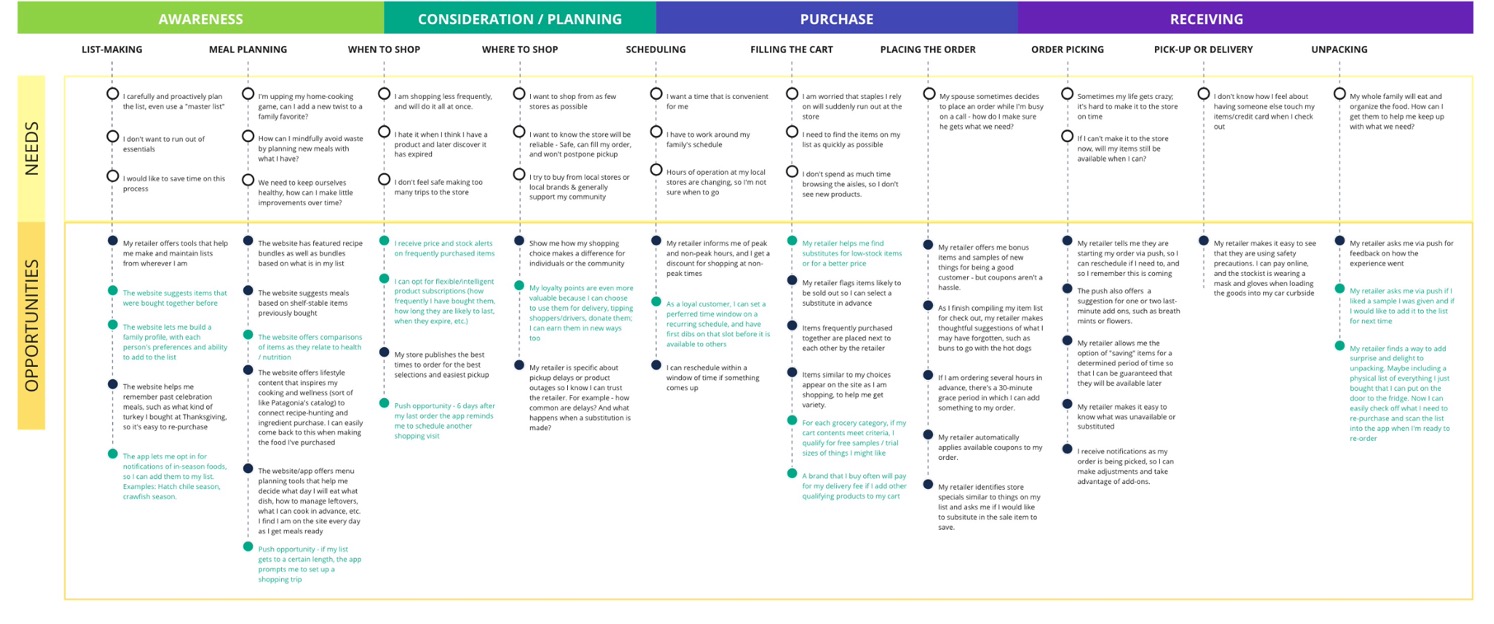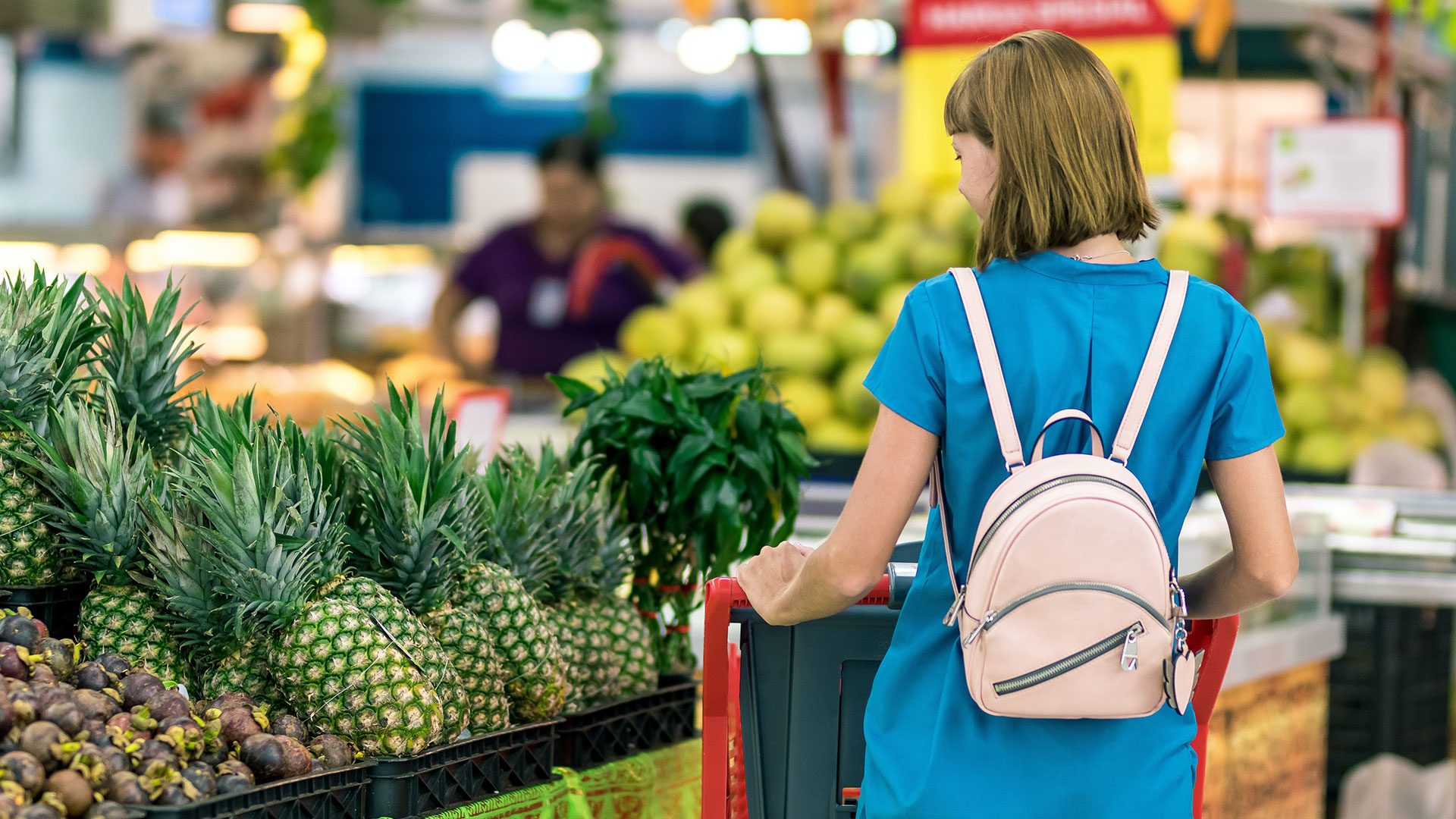Published by
How do customers discover new brands, explore products, and explore impulse buy when shopping digitally?
The last few months have proven that COVID has been a catalyst for rapid grocery e-commerce adoption. In the U.S. alone, consumers are buying more groceries online than ever before with a surge to likely exceed 40% growth this year according to the Coresight Research U.S. Online Grocery Survey 2020.
- 40 million consumers bought groceries online in April, twice as many as in February
- Instacart sold $700M in groceries in the first two weeks of April, a 450% increase over December 2019
- 40 percent of shoppers said they were shopping fewer stores for groceries during the pandemic
As shoppers make fewer trips to the store, browsing is giving way to planning. Because of this, consumers are buying more, but less frequently. They are narrowing selections to the most familiar brands, rather than trying new ones. Increased reliance on home-cooking means consumers are proactively planning meals and shopping lists also. In addition, because consumers are spending minimal time in-store or buying online, the result has been fewer impulse buys. Based on the last few months, we’ve know convenient experiences while ordering and scheduling delivery or pick-up are most likely to retain customers.
So What is the Opportunity for Grocery Retailers?
Create data-driven moments for consumers to discover the right products at the right time.
Grocers should use purchase history and preference data to make personalized product suggestions. They should consider creating convenient bundles based on complete meals, seasonal offerings and related items. In order to boost frequency, subscriptions and push messaging should be utilized. And retailers can encourage variety through samples and last-minute item opportunities.
Recently, Bottle Rocket did some experience design exercises to explore customer journey opportunities from awareness to purchase to receiving.

Based on our research, we selected six discoverability experiences that evolve the consumer’s journey in the digital space. Here are high-level overviews of the six discoverability experiences that can help grocers stay relevant in these trying times and the level of effort we believe is associated with each opportunity.
- Build intelligent shopping list tools (level of effort: small)
- Bring back the enjoyable aspects of browsing (level of effort: medium)
- Give personalized, intelligent product samples (level of effort: medium)
- Keep shoppers engaged with push messaging (level of effort: medium)
- Reimagine subscription solutions for grocery (level of effort large)
- Bridge the gap between online and offline tasks (level of effort: blue-sky)
Let’s take a deeper look. We’ve described each experience through the lens of the customer.
- Build intelligent shopping list tools to help families who need to avoid forgetting items or running out of essentials
One idea: Create a Household shopping Dashboard
How a customer would experience this: I can use the website or app to build a household profile. Each person has a login to the household account. We can set individual preferences such as dietary restrictions, favorite brands and reminders. My spouse and children can maintain their own lists within the household account. I can access a dashboard that tracks everything from list updates to product availability. Everyone in the household is notified when I am preparing an order so they can make sure their lists are up to date.
The retailer benefits of this experience:
– Gather preference data for better suggestions
– Larger order sizeThe grocer could use this existing leverage to make it happen:
– Existing customer purchase history data - Bring back the enjoyable aspects of browsing by offering fun ways to explore variety in the digital store
One idea: Online Farmers Market
How a customer would experience this: I get a notification that one of my favorites — hatch chiles — are now in season! I can add this item to my list with one tap, or I can browse the app to find recipe videos, meal bundles and even related bakery items like hatch-chile cornbread. The app offers me a variety of chile-centric shopping lists of complementary products that I can add to my own list.
The retailer benefits of this experience:
– Themed lists introduce variety
– Shopper is prompted to orderThe grocer could use this existing leverage to make it happen:
– Existing product relationship data - Give personalized, intelligent product samples to let shoppers try something new with little commitment
One idea: Sample and Save
How a customer would experience this: As I shop each grocery category, I am offered personalized samples. After I have a few types of granola bars in my cart, the app tells me that I qualify for a free sample of a new protein bar. After adding all the laundry items I need to my cart, a free sample of stain remover is automatically included in my cart. When placing Kraft cheese in my cart, the app tells me that if I order two more Kraft products, I will get free delivery.
The retailer benefits of this experience:
– Customer is encouraged to try variety
– Larger order sizeThe grocer could use this existing leverage to make it happen:
– Existing product relationship data - Help shoppers build new shopping routines with messages that keep them engaged without even opening the app
One idea: Rich Push Messaging for Web and App
How a customer would experience this: Six days after my last order, the app reminds me that it’s time to schedule another order. I can convert my current list to an order with one tap, and while my order is being pulled, the app suggests that I add last-minute items, like flowers, to my order. Recipes that I shopped from are pushed to me at dinner time. The next day, the app asks if I liked the samples I received, and lets me add them to my list.
The retailer benefits of this experience:
– Larger order size
– Customer retention
– Frequent app useThe grocer could use this existing leverage to make it happen:
– Customer preference data - Take the pressure off of list-planning and scheduling orders with re-imagined subscription solutions for groceries
One idea: Flex Subscriptions
How a customer would experience this: The app suggests intelligent subscriptions for items I have bought frequently. Machine learning-provided insights inform the frequency so that I don’t have to worry about the frequency; it’s always just right. I can set flex options for substitutions, and I can also subscribe to personalized and retailer-curated subscription box bundles. When a subscription is coming up, I can add more items to the delivery.
The retailer benefits of this experience:
– Customer retention
– More frequent ordersThe grocer could use this existing leverage to make it happen:
– Customer purchase history
– Rich product data - Bridge the gap between offline behaviors and online shopping with a physical list that keeps groceries top of mind
One idea: Physical-to-Virtual Shopping List
How a customer would experience this: When I receive my order, I also receive a branded physical list of everything I ordered that I can stick to the refrigerator. Everyone in the family can check things off as they are used, and add new items at the bottom. When it’s time to place a new order, I use the app to scan the list. Using OCR and machine learning, the app builds the list automatically. I can also use the scanner to scan additional product bar codes and to add loyalty cards and credit cards to my account.
The retailer benefits of this experience:
– Repeat purchases
– Physical reminder in the home
– Marketing buzzThe grocer could use this existing leverage to make it happen:
– Builds on existing order flows
As a result of deploying any of these ideas, grocery store companies will grow, engage and retain more customers. Consumers are seeking solutions for radically new grocery buying needs and will choose retailers that meet them with right products at the right time. But retailers must go beyond reliability and safety by providing novelty and delight in order to deepen the engagement with their customers. Data-driven and personalized experiences will be an important component of encouraging shoppers to build new digitally-centered shopping habits with the retailers that provide these tools.
Share:
Categories
tags
Related Posts

The Value of Agency Project Managers

Your Guide to a Product Analytics MVP


